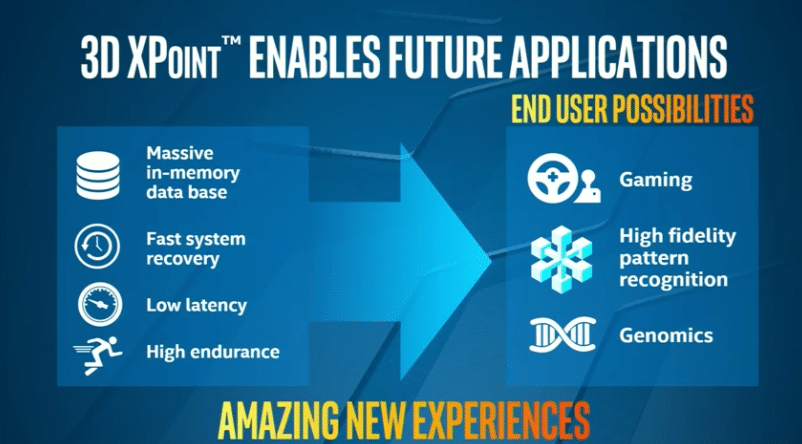Today Micron Technology Inc. and Intel Corporation unveiled new non-volatile memory technology that they claim may revolutionize any device, service, or application, 3D XPoint (cross point). 3D XPoint is in production now and is the first new category of memory introduced in over 25 years.

New data is being generated at a massive scale, by 2024 total data is expected to grow as high as 44 zettabytes (44 billion terabytes). Connected devices and digital services are piling on the explosion of new data even faster. Collecting the data is one piece of the equation but collected data that just sits is useless. In order for the data to be useful it needs to be analyzed and analyzed quickly. Until now there has always been a trade off between cost, power, and performance. The new 3D XPoint memory will combine the performance, power, density, non-volatility, and costs savings of all the memory technologies that current exist. Micron and Intel claim their new technology will have 1000 times the performance and endurance of current NAND technology while being ten times denser than traditional memory.
After a decade of research, Intel and Micron were able to create a transistor-less cross point architecture creates a three-dimensional checkerboard where memory cells sit at the intersection of word lines and bit lines, allowing the cells to be addressed individually. This enables data to be read and written in small sizes increasing read/write speeds, reduces latency, and allows data to be stored closer to the processor for faster access speeds.

3D XPoint will enable companies to analyze tremendous amounts of data in nanoseconds. Some examples would be retailers being able to quickly identify and track identity fraud and healthcare researchers would be able to process and analyze massive data sets in real time, accelerating complex tasks such as genetic analysis and disease tracking. The benefits can be extended to the PC market as well with much faster multimedia, social media, and gaming experiences.
Availability
3D XPoint technology will sample later this year with select customers. Intel and Micron will be developing individual products based on the technology. These end products are targeted for release as early as 2016.




 Amazon
Amazon